Preface
September 3rd, 2015
Last December, President Obama announced the reestablishment of diplomatic relations with Cuba after a fifty-four-year standoff between the most powerful country in the world and an island the size of Florida, ninety miles off the coast of that southern state.
During that half-century, many books were written about Cuba, most by Americans who in one way or another braved or got around their governments travel ban. Very few of these books attracted mainstream publishers, unless they were critical of the socialist regime, or were written by academics.
Its only in the past decade that the public has become aware of the medias lack of independence, especially when it comes to foreign affairs, leading to the birth of independent on-line news sources. Most American journalists who covered Cuba during the standoff wrote what was expected of them.
In1963, while working at the French News Agency in Rome I met free-lance journalists whose reports on the Cuban Revolution differed markedly from those in the mainstream press. My book on the filming of the Fellini film 8 1/2 was being published in several countries and the French weekly Paris-Match, having just published excerpts from it, were receptive to my proposal to follow these with a non-political portrait of the leader of the Cuban Revolution. My French passport, acquired through marriage, would enable me to beat Washington's ban on its citizens traveling to the troublesome island, and I would finance the trip with my book advances. My unstated goal was to assess the trustworthiness of the profession I was joining.
During the five weeks I spent waiting to meet with Fidel, I realized that things were not as black and white in Cuba as the Western press made them seem. Having at last gained access to the lider massimo, my non-political portrait was published in September, prompting an invitation to return to the island. I had already signed a contract with an Italian publisher for a book that would answer the question in American press circles: Was Castro already a communist when he went to the Sierra, or did he become one after taking power?
I had stayed on at Paris Match as an intern, and on November 22, we had just put the weekly issue to bed when President Kennedy was shot: we stayed up all night rewriting the magazine and the next day I cabled Havana to move up my departure. Jean Daniel, publisher of the widely read French progressive weekly Le Nouvel Observateur, had brought Fidel a message from the American President just days before the assassination, and I wondered what would be in store for the island with a new chief executive, whose profile left me uneasy. On December 5th, when I met with Fidel, he was eager to discuss that cataclysmic event.
Many months later, having interviewed all of Fidels early followers who were now part of the government, I returned to Italy and gave the publisher permission to edit my 400-page manuscript. Ultimately, I could not accept his 150- page product, and it took me too long to rework it to our mutual satisfaction for it to find a place in his publishing schedule without becoming dated. It stayed in the drawer while I wrote other books, including one in French that foresaw the fall of the Berlin Wall and the dissolution of the Soviet Union.
It was not until 2004 that this book was published in the US, only to be put out of print almost immediately as (still) a bad political decision. In 2010, the original Italian version was published by Zambon. It was presented at the Turin Book Fair that year and at the Havana Book Fair in 2011, a chance for me to return to the island for the first time. As Cuba and the US pursue a new relationship, it is a unique historical document.
Between December 1963 and June 1964, the following events took place in Cuba:
The US Coast Guard detained Cuban fishermen; there was a culture war between the communist Blas Roca and Alfredo Guevara, who headed the Cuban Film Institute; a young man who had betrayed participants in an attack on Batistas Presidential Palace was caught and tried for treason; Castro went to Moscow to see Khrushchev; partisans of monetary incentives and those against carried on a running public battle; American U2s flew missions over Cuba, and there were tensions at Guantanamo as Cuban exiles tried to stage another invasion.
As these events were unfolding, I interviewed all the men and women who had been with Fidel in the Sierra and were now running the Cuban government, including Celia Sanchez, Che Guevara, Raul Castro, and President Osvaldo Dorticos. During informal conversations each described his or her relationship to socialism.
The story of how I actually got to Cuba for the first time is told in my memoir Lunch with Fellini, Dinner with Fidel. This is the diary I kept from 1963-1964, as I went from being a right-brain person devoted to the arts, to a left-brain person curious about the big picture. It is followed by notes on my brief 2011 return.
The Twelve
Most of the members of the government interviewed in this book were among the 82 who set sail from Mexico on the boat Granma in December 1956. They became known as The Twelve.
Fidel Castro :
First Secretary of the Cuban Communist Party
Raul Castro:
Head of the Armed Forces
Che Guevara:
Planning Minister
Camilo Cienfuegos:
Killed in plane crash in 1960
Ramiro Valdes:
Interior Minister
Guillermo Garcia:
Commander of the Western Army
Juan Almeida:
Vice Minister of the Armed Forces
Iphigenio Almeijeiras :
Vice Minister of the Armed Forces
Luis Crespo :
In charge of importing agricultural machinery
Jesus Montane:
Minister of Telecomunications
Faustino Perez:
Minister of Hydraulics
Cesar Escalante:
Head of the Communist Party Press Department and brother of the Stalinist, Annibal Escalante
Carlos Raphael Rodriguez:
President the National Institute of Agrarian Reform, economist who coordinated the Communist Party's cooperation with Fidel's movement (26th of July)
Celia Sanchez:
Prepared the landing on the ground, then joined the rebel forces in the Sierra, becoming Fidels most trusted collaborator
Vilma Vspin:
Married to Raul Castro and head of the Cuban Womens Federation.
Manuel Fajardo:
The cattleman, was the first peasant to join the rebels after the landing
Armando Hart:
And his wife Haydee Santamaria, worked underground, both before and after the landing
Captain Antonio Nunez Jimenez:
Head of the National Academy of Sciences, geographer who advised the troops in the Sierra

Chapter I
Just As It Was Before
Havana, Sunday, December 1, 1963
The  one-way trip lasted five days. Wednesday, the Caravelle from Paris arrived in Prague simultaneously with the Cubana de Aviacion Brittania from Havana. The newness of that first contact with the Iron Curtain was accentuated by the sight of Cubans rushing into the arms of Slavs in the old cement airport with white flowered curtains. Travelers and crew were dispatched to the sinister Hotel International at the citys edge. Luckily, the old, dark-wood trolley that went round and round in front of the door took us to the old town. There, we could evoke the ghosts of Mozart and Dvorak, make out the other bank of the immense Moldau in the evening fog and, trembling with cold, seek refuge in a warm beer hall where the waiters still wear tuxedos.
one-way trip lasted five days. Wednesday, the Caravelle from Paris arrived in Prague simultaneously with the Cubana de Aviacion Brittania from Havana. The newness of that first contact with the Iron Curtain was accentuated by the sight of Cubans rushing into the arms of Slavs in the old cement airport with white flowered curtains. Travelers and crew were dispatched to the sinister Hotel International at the citys edge. Luckily, the old, dark-wood trolley that went round and round in front of the door took us to the old town. There, we could evoke the ghosts of Mozart and Dvorak, make out the other bank of the immense Moldau in the evening fog and, trembling with cold, seek refuge in a warm beer hall where the waiters still wear tuxedos.
The next day, we left as planned for Havana. The plane had not needed any repairs. We refueled in Shannon and took off promptly. An hour later, we had to turn back because the plane was leaking oil. We spent two days and two nights in the nearby town of Limerick, which was very cold, without our suitcases. According to the front page of the local paper, the Cuban plane being repaired at Shannon was carrying Soviet and Soviet-trained Cuban technicians. The truth was rather different. No one was repairing the plane because the mechanic hadnt been able to get a seat on the daily flight between London and the North Atlantic hub.
Next page

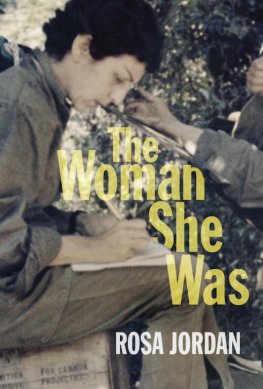
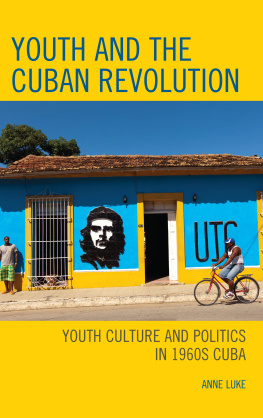
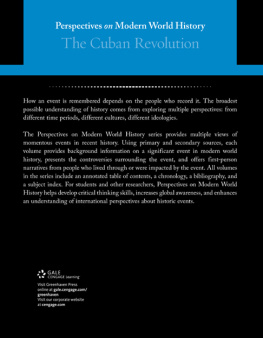
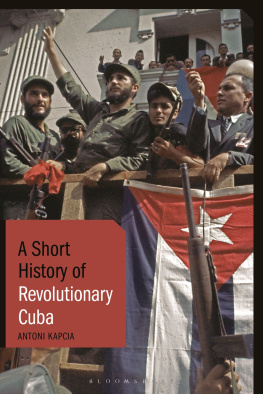

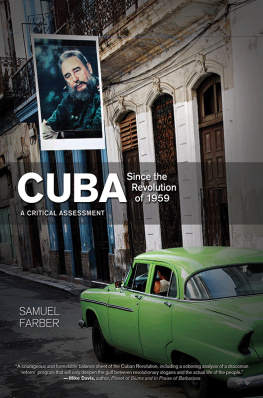
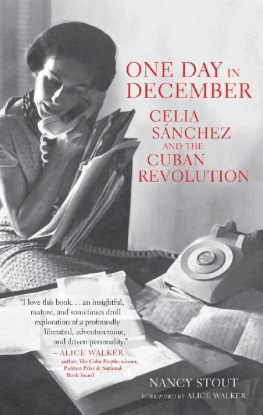
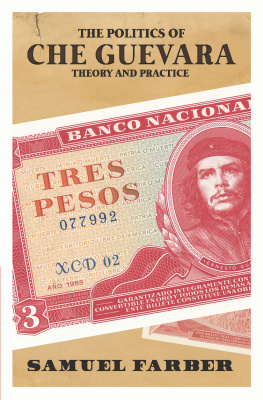

 one-way trip lasted five days. Wednesday, the Caravelle from Paris arrived in Prague simultaneously with the Cubana de Aviacion Brittania from Havana. The newness of that first contact with the Iron Curtain was accentuated by the sight of Cubans rushing into the arms of Slavs in the old cement airport with white flowered curtains. Travelers and crew were dispatched to the sinister Hotel International at the citys edge. Luckily, the old, dark-wood trolley that went round and round in front of the door took us to the old town. There, we could evoke the ghosts of Mozart and Dvorak, make out the other bank of the immense Moldau in the evening fog and, trembling with cold, seek refuge in a warm beer hall where the waiters still wear tuxedos.
one-way trip lasted five days. Wednesday, the Caravelle from Paris arrived in Prague simultaneously with the Cubana de Aviacion Brittania from Havana. The newness of that first contact with the Iron Curtain was accentuated by the sight of Cubans rushing into the arms of Slavs in the old cement airport with white flowered curtains. Travelers and crew were dispatched to the sinister Hotel International at the citys edge. Luckily, the old, dark-wood trolley that went round and round in front of the door took us to the old town. There, we could evoke the ghosts of Mozart and Dvorak, make out the other bank of the immense Moldau in the evening fog and, trembling with cold, seek refuge in a warm beer hall where the waiters still wear tuxedos.